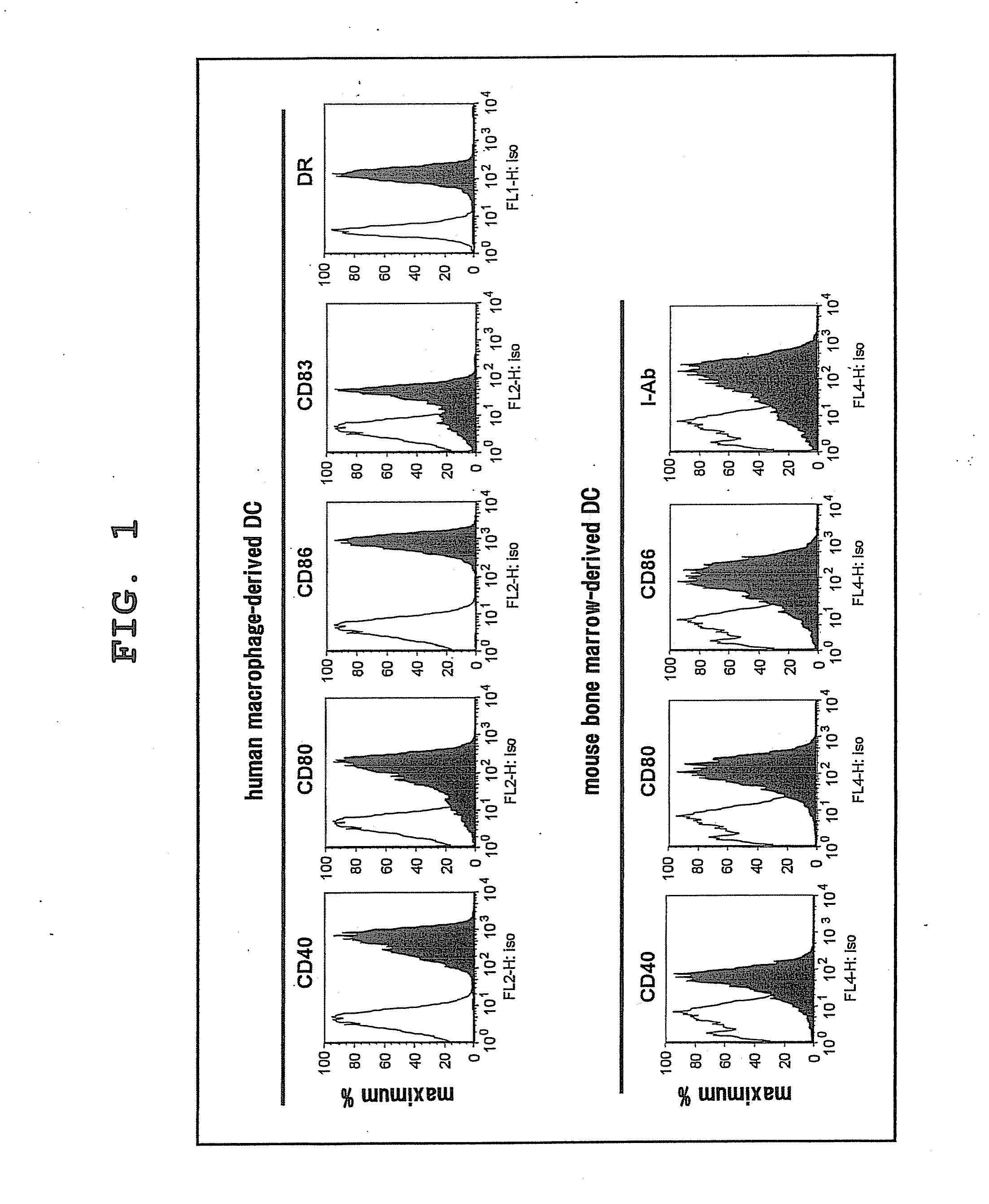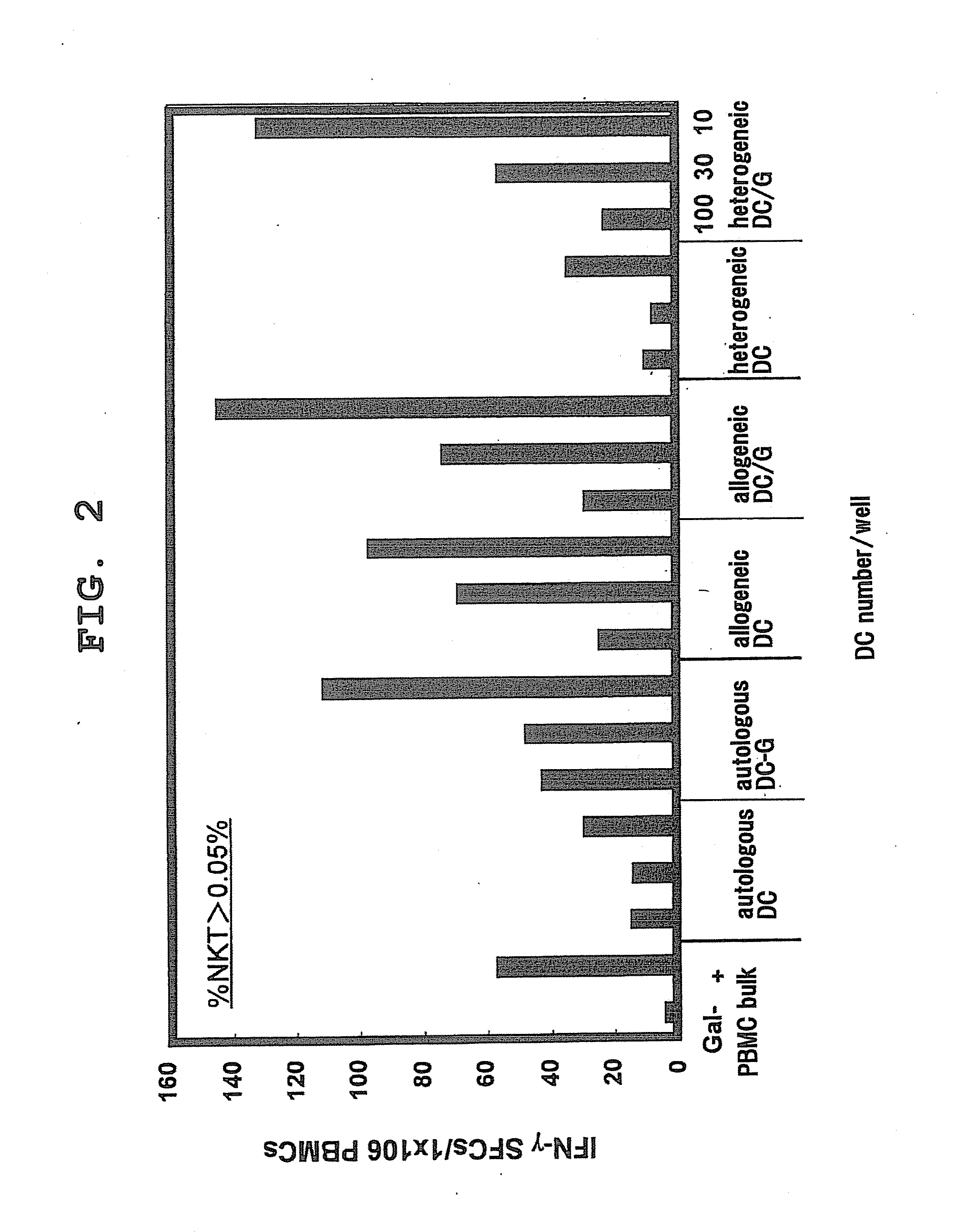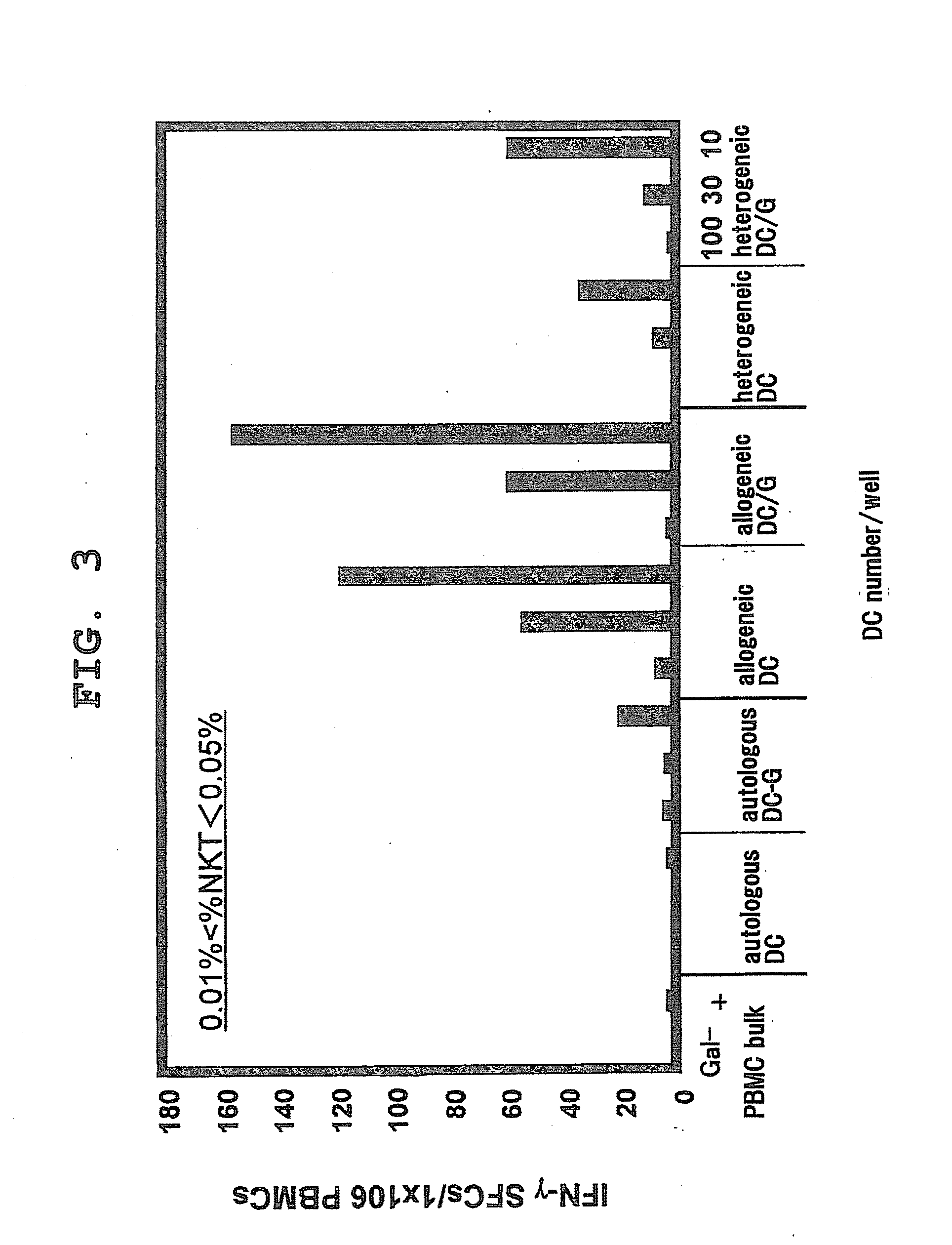Method for analysis of nkt cell function
a functional analysis and nkt cell technology, applied in the field of can solve the problems of unattainable genuine functional analysis of nkt cell per se, unfavorable secondary factors, and difficult to analyze peripheral blood nkt cell function, so as to avoid secondary factors
- Summary
- Abstract
- Description
- Claims
- Application Information
AI Technical Summary
Benefits of technology
Problems solved by technology
Method used
Image
Examples
example 1
Comparison of Expression Profiles of Human / Mouse Dendritic Cell (DC)
[0059]For a study of difference in NKT cell activation ability between human and mouse DC, expression profiles of human and mouse DC were studied first. Specifically, mature mouse DCs were obtained by cultivating mouse bone marrow cells in the presence of GM-CSF for 7 days, and then cultivating them while adding LPS for 1 day, and expressions of CD80, CD86 and CD40 were measured by flow cytometry. Mature human DCs were obtained by isolating monocytes, cultivating them in the presence of GM-CSF and IL-4, adding IL-1β, TNF-α and PGE2 6 days later, and cultivating them for 1 day, and expressions of CD80, CD86 and CD83 were measured by flow cytometry.
[0060]As a result, CD40, CD80, CD83, CD86 and DR were positive in human DCs, and CD40, CD80, CD86 and I-Ab were also positive in mouse DCs (FIG. 1).
[0061]From the foregoing, it was confirmed that both human and mouse DCs show similar expression profiles, and typical mature ...
example 2
Detection of High-Low Frequency Primary NKT Cell by ELISPOT Assay in Autologous, Allogeneic or Heterologous System Using α-GalCer-Loaded Mature DC
[0062]In order to study whether activation of NKT cells in peripheral blood varies by DCs of different derivation, NKT cell activation in an autologous, allogeneic or heterologous system was studied by an ELISPOT assay with IFN-γ productivity as an index.
[0063]DCs were prepared as the following.
[0064]Human DCs were obtained by purifying CD14% monocytes with magnetic beads (Miltenyi Biotec Inc. Auburn, Calif.) and cultivating them for 7 days in the presence of 500 U / ml recombinant human IL-4 and 1,000 U / ml recombinant human GM-CSF. α-GalCer (100 ng / ml) or the same amount of vehicle (DMSO, Sigma) was loaded onto DCs at the 5th day, given maturation stimuli (10 ng / ml IL-1β, 10 ng / ml TNFα, and 1 μg / ml PGE2) at the 6th day, and recovered at the 7th day.
[0065]Bone marrow precursor cells were grown into DCs induced from mouse bone marrow in 5% FC...
example 3
Evaluation of Human T Cell Response to Autologous, Allogeneic and Heterologous DCs by Mixed Lymphocyte Reaction (MLR)
[0070]In a system using allogeneic or heterologous DCs and human-derived PBMCs (allogeneic or heterologous system), the possibility was assumed that on evaluation of functionality of NKT cells contained in human-derived PBMCs, a side reaction (e.g., cytokine production) that was accompanied with non-NKT cell (particularly human T cell) response resulting from DCs had an impact on activation of human NKT cells. Therefore, it was studied whether or not T cell response that could induce such a side reaction in these systems would arise.
[0071]T cell response was evaluated by mixed lymphocyte reaction. Specifically, each type of mature DC (autologous, allogeneic and heterologous DCs) prepared by the same method as described in Example 2 was treated with radiation, put on a 96-well round bottom plate, added to 1×105 Mφ-depleted PBMCs, and cultivated for 6 days. 3H-thymidine...
PUM
| Property | Measurement | Unit |
|---|---|---|
| concentration | aaaaa | aaaaa |
| concentration | aaaaa | aaaaa |
| frequency | aaaaa | aaaaa |
Abstract
Description
Claims
Application Information
 Login to View More
Login to View More - R&D
- Intellectual Property
- Life Sciences
- Materials
- Tech Scout
- Unparalleled Data Quality
- Higher Quality Content
- 60% Fewer Hallucinations
Browse by: Latest US Patents, China's latest patents, Technical Efficacy Thesaurus, Application Domain, Technology Topic, Popular Technical Reports.
© 2025 PatSnap. All rights reserved.Legal|Privacy policy|Modern Slavery Act Transparency Statement|Sitemap|About US| Contact US: help@patsnap.com



